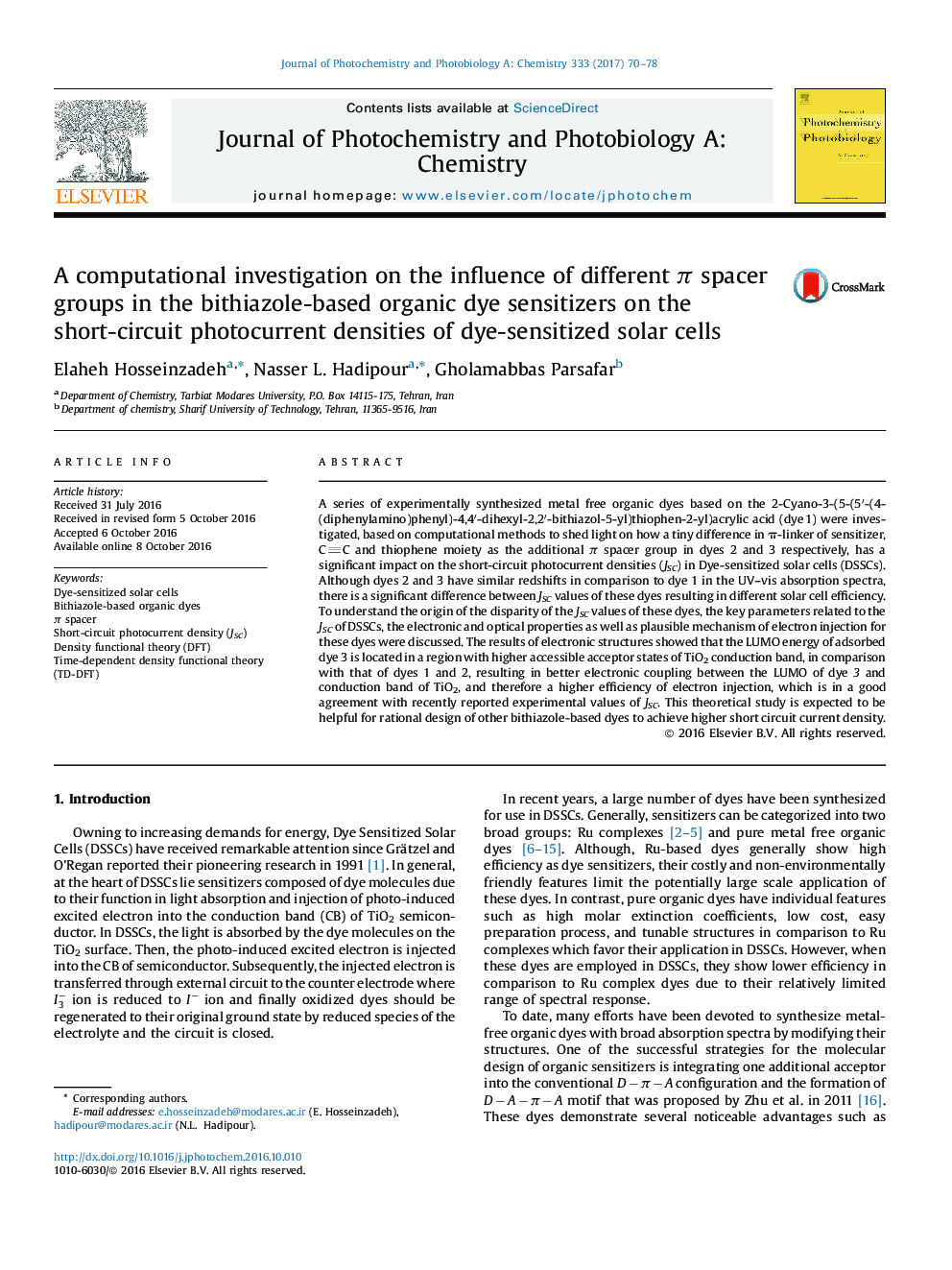| Article ID | Journal | Published Year | Pages | File Type |
|---|---|---|---|---|
| 6452459 | Journal of Photochemistry and Photobiology A: Chemistry | 2017 | 9 Pages |
â¢The origin of significant difference of JSC of bithiazole-based dyes 1-3 were investigated.â¢The electronic and optical properties as well as mechanism of electron injection in bithiazole-based dyes 1-3 were studied.â¢The number of acceptor states in the conduction band of TiO2 are correlate with experimental JSC.
A series of experimentally synthesized metal free organic dyes based on the 2-Cyano-3-(5-(5â²-(4-(diphenylamino)phenyl)-4,4â²-dihexyl-2,2â²-bithiazol-5-yl)thiophen-2-yl)acrylic acid (dye 1) were investigated, based on computational methods to shed light on how a tiny difference in Ï-linker of sensitizer, CC and thiophene moiety as the additional Ï spacer group in dyes 2 and 3 respectively, has a significant impact on the short-circuit photocurrent densities (JSC) in Dye-sensitized solar cells (DSSCs). Although dyes 2 and 3 have similar redshifts in comparison to dye 1 in the UV-vis absorption spectra, there is a significant difference between JSC values of these dyes resulting in different solar cell efficiency. To understand the origin of the disparity of the JSC values of these dyes, the key parameters related to the JSC of DSSCs, the electronic and optical properties as well as plausible mechanism of electron injection for these dyes were discussed. The results of electronic structures showed that the LUMO energy of adsorbed dye 3 is located in a region with higher accessible acceptor states of TiO2 conduction band, in comparison with that of dyes 1 and 2, resulting in better electronic coupling between the LUMO of dye 3 and conduction band of TiO2, and therefore a higher efficiency of electron injection, which is in a good agreement with recently reported experimental values of JSC. This theoretical study is expected to be helpful for rational design of other bithiazole-based dyes to achieve higher short circuit current density.
